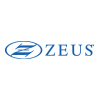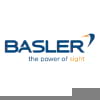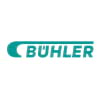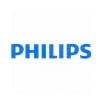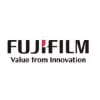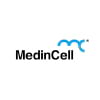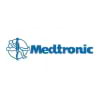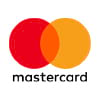TABLE 1 SOME OTHER NON-DAIRY PRODUCTS RETAIL PRICE MENTION IN BELOW TABLE:
TABLE 2 GLOBAL DAIRY ALTERNATIVE MARKET, PRODUCT TYPE, 2016-2025 (USD MILLION)
TABLE 3 GLOBAL ALMOND MILK IN DAIRY ALTERNATIVE MARKET, BY REGION, 2016-2025, (USD MILLION)
TABLE 4 GLOBAL SOY MILK IN DAIRY ALTERNATIVE MARKET, BY REGION, 2016-2025, (USD MILLION)
TABLE 5 GLOBAL COCONUT MILK IN DAIRY ALTERNATIVE MARKET, BY REGION, 2016-2025, (USD MILLION)
TABLE 6 GLOBAL RICE MILK IN DAIRY ALTERNATIVE MARKET, BY REGION, 2016-2025, (USD MILLION)
TABLE 7 GLOBAL OAT MILK IN DAIRY ALTERNATIVE MARKET, BY REGION, 2016-2025, (USD MILLION)
TABLE 8 GLOBAL CASHEW MILK IN DAIRY ALTERNATIVE MARKET, BY REGION, 2016-2025, (USD MILLION)
TABLE 9 GLOBAL DAIRY ALTERNATIVES MARKET, BY TYPE, 2016-2025 (USD MILLION)
TABLE 10 GLOBAL ORGANIC IN DAIRY ALTERNATIVES MARKET, BY REGION, 2016-2025, (USD MILLION)
TABLE 11 GLOBAL INORGANIC IN DAIRY ALTERNATIVES MARKET, BY REGION, 2016-2025, (USD MILLION)
TABLE 12 GLOBAL DAIRY ALTERNATIVES MARKET, BY FORMULATION, USD MILLION (2016-2025)
TABLE 13 GLOBAL PLAIN & SWEETENED IN DAIRY ALTERNATIVE MARKET, BY REGION, USD MILLION (2016-2025)
TABLE 14 GLOBAL PLAIN & UNSWEETENED IN DAIRY ALTERNATIVE MARKET, BY REGION, USD MILLION (2016-2025)
TABLE 15 GLOBAL FLAVOURED & SWEETENED IN DAIRY ALTERNATIVES MARKET, BY REGION, USD MILLION (2016-2025)
TABLE 16 GLOBAL FLAVOURED & UNSWEETENED IN DAIRY ALTERNATIVES MARKET, BY REGION, USD MILLION (2016-2025)
TABLE 17 GLOBAL DAIRY ALTERNATIVES MARKET, BY APPLICATION, 2016-2025 (USD MILLION)
TABLE 18 GLOBAL FOOD IN DAIRY ALTERNATIVES MARKET, BY REGION, 2016-2025, (USD MILLION)
TABLE 19 GLOBAL BEVERAGES IN DAIRY ALTERNATIVES MARKET, BY REGION, 2016-2025, (USD MILLION)
TABLE 20 GLOBAL NUTRITIVE IN DAIRY ALTERNATIVE MARKET, BY NUTRITIVE, USD MILLION (2016-2025)
TABLE 21 GLOBAL PROTEIN IN DAIRY ALTERNATIVE MARKET, BY REGION, USD MILLION (2016-2025)
TABLE 22 GLOBAL CARBOHYDRATES IN DAIRY ALTERNATIVE MARKET, BY REGION, USD MILLION (2016-2025)
TABLE 23 GLOBAL VITAMINS IN DAIRY ALTERNATIVE MARKET, BY REGION, USD MILLION (2016-2025)
TABLE 24 GLOBAL DISTRIBUTION CHANNEL IN DAIRY ALTERNATIVE MARKET, BY DISTRIBUTION CHANNEL, USD MILLION (2016-2025)
TABLE 25 GLOBAL SUPERMARKETS/HYPERMARKETS IN DAIRY ALTERNATIVE MARKET, BY REGION, USD MILLION (2016-2025)
TABLE 26 GLOBAL SPECIALIZED STORES IN DAIRY ALTERNATIVE MARKET, BY REGION, USD MILLION (2016-2025)
TABLE 27 GLOBAL ONLINE IN DAIRY ALTERNATIVE MARKET, BY REGION, USD MILLION (2016-2025)
TABLE 28 US MILK SUBSTITUTE SALES IN 2015
TABLE 29 US MILK SUBSTITUTE SALES IN 2015
TABLE 30 NORTH AMERICA DAIRY ALTERNATIVES MARKET, BY COUNTRY, USD MILLION (2016-2025)
TABLE 31 NORTH AMERICA DAIRY ALTERNATIVES MARKET, BY PRODUCT TYPE, USD MILLION (2016-2025)
TABLE 32 NORTH AMERICA DAIRY ALTERNATIVES MARKET, BY TYPE, USD MILLION (2016-2025)
TABLE 33 NORTH AMERICA DAIRY ALTERNATIVES MARKET, BY FORMULATION, 2016-2025 (USD MILLION)
TABLE 34 NORTH AMERICA DAIRY ALTERNATIVES MARKET ,BY APPLICATION, USD MILLION (2016-2025)
TABLE 35 NORTH AMERICA DAIRY ALTERNATIVES MARKET ,BY TYPE, USD MILLION (2016-2025)
TABLE 36 NORTH AMERICA DAIRY ALTERNATIVES MARKET ,BY TYPE, USD MILLION (2016-2025)
TABLE 37 NORTH AMERICA DAIRY ALTERNATIVES MARKET , BY NUTRITIVE, USD MILLION (2016-2025)
TABLE 38 NORTH AMERICA DAIRY ALTERNATIVES MARKET , BY DISTRIBUTION CHANNEL, USD MILLION (2016-2025)
TABLE 39 U.S. DAIRY ALTERNATIVES MARKET , BY PRODUCT TYPE , USD MILLION (2016-2025)
TABLE 40 U.S. DAIRY ALTERNATIVES MARKET , BY TYPE, USD MILLION (2016-2025)
TABLE 41 U.S. DAIRY ALTERNATIVES MARKET, BY FORMULATION, 2016-2025 (USD MILLION)
TABLE 42 U.S. DAIRY ALTERNATIVES MARKET ,BY APPLICATION, USD MILLION (2016-2025)
TABLE 43 U.S. DAIRY ALTERNATIVES MARKET ,BY TYPE, USD MILLION (2016-2025)
TABLE 44 U.S.DAIRY ALTERNATIVES MARKET ,BY TYPE, USD MILLION (2016-2025)
TABLE 45 U.S. DAIRY ALTERNATIVES MARKET ,BY NUTRITIVE, USD MILLION (2016-2025)
TABLE 46 U.S. DAIRY ALTERNATIVES MARKET ,BY DISTRIBUTION CHANNEL, USD MILLION (2016-2025)
TABLE 47 CANADA DAIRY ALTERNATIVES MARKET , BY PRODUCT TYPE, USD MILLION (2016-2025)
TABLE 48 CANADA DAIRY ALTERNATIVES MARKET , BY TYPE, USD MILLION (2016-2025)
TABLE 49 CANADA DAIRY ALTERNATIVES MARKET , BY FORMULATION, USD MILLION (2016-2025)
TABLE 50 CANADA DAIRY ALTERNATIVES MARKET ,BY APPLICATION, USD MILLION (2016-2025)
TABLE 51 CANADA DAIRY ALTERNATIVES MARKET ,BY TYPE, USD MILLION (2016-2025)
TABLE 52 CANADA DAIRY ALTERNATIVES MARKET ,BY TYPE, USD MILLION (2016-2025)
TABLE 53 CANADA DAIRY ALTERNATIVES MARKET ,BY NUTRITIVE , USD MILLION (2016-2025)
TABLE 54 CANADA DAIRY ALTERNATIVES MARKET ,BY DISTRIBUTION CHANNEL, USD MILLION (2016-2025)
TABLE 55 MEXICO DAIRY ALTERNATIVES MARKET , BY PRODUCT TYPE, USD MILLION (2016-2025)
TABLE 56 MEXICO DAIRY ALTERNATIVES MARKET , BY TYPE, USD MILLION (2016-2025)
TABLE 57 MEXICO DAIRY ALTERNATIVES MARKET , BY FORMULATION, USD MILLION (2016-2025)
TABLE 58 MEXICO DAIRYALTERNATIVES MARKET ,BY APPLICATION, USD MILLION (2016-2025)
TABLE 59 MEXICO DAIRY ALTERNATIVES MARKET ,BY TYPE, USD MILLION (2016-2025)
TABLE 60 MEXICO DAIRY ALTERNATIVES MARKET ,BY TYPE, USD MILLION (2016-2025)
TABLE 61 MEXICO DAIRYALTERNATIVES MARKET ,BY NUTRITIVE, USD MILLION (2016-2025)
TABLE 62 MEXICO DAIRYALTERNATIVES MARKET ,BY DISTRIBUTION CHANNEL, USD MILLION (2016-2025)
TABLE 63 EUROPE DAIRY ALTERNATIVES MARKET , BY COUNTRY, USD MILLION (2016-2025)
TABLE 64 EUROPE DAIRY ALTERNATIVES MARKET , BY PRODUCT TYPE, USD MILLION (2016-2025)
TABLE 65 EUROPE DAIRY ALTERNATIVES MARKET , BY TYPE, USD MILLION (2016-2025)
TABLE 66 EUROPE DAIRY ALTERNATIVES MARKET , BY FORMUALTION, USD MILLION (2016-2025)
TABLE 67 EUROPE DAIRY ALTERNATIVES MARKET ,BY APPLICATION,, USD MILLION (2016-2025)
TABLE 68 EUROPE FOOD IN DAIRY ALTERNATIVES MARKET, BY TYPE, USD MILLION (2016-2025)
TABLE 69 EUROPE CHEESE IN DAIRY ALTERNATIVES MARKET, BY TYPE, USD MILLION (2016-2025)
TABLE 70 EUROPE DAIRY ALTERNATIVES MARKET , BY NUTRITIVE, USD MILLION (2016-2025)
TABLE 71 EUROPE DAIRYALTERNATIVES MARKET , BY DISTRIBUTION CHANNEL, USD MILLION (2016-2025)
TABLE 72 U.K. DAIRY ALTERNATIVES MARKET , BY PRODUCT TYPE , USD MILLION (2016-2025)
TABLE 73 U.K. DAIRY ALTERNATIVES MARKET , BY TYPE, USD MILLION (2016-2025)
TABLE 74 U.K. DAIRY ALTERNATIVES MARKET , BY FORMULATION, USD MILLION (2016-2025)
TABLE 75 U.K. DAIRY ALTERNATIVES MARKET ,BY APPLICATION, USD MILLION (2016-2025)
TABLE 76 U.K. FOOD IN DAIRY ALTERNATIVES MARKET, BY TYPE, USD MILLION (2016-2025)
TABLE 77 U.K. CHEESE IN DAIRY ALTERNATIVES MARKET, BY TYPE, USD MILLION (2016-2025)
TABLE 78 U.K. DAIRY ALTERNATIVES MARKET ,BY NUTRITIVE, USD MILLION (2016-2025)
TABLE 79 U.K. DAIRYALTERNATIVES MARKET ,BY DISTRIBUTION CHANNEL, USD MILLION (2016-2025)
TABLE 80 GERMANY DAIRY ALTERNATIVES MARKET , BY PRODUCT TYPE , USD MILLION (2016-2025)
TABLE 81 GERMANY DAIRY ALTERNATIVES MARKET , BY TYPE, USD MILLION (2016-2025)
TABLE 82 GERMANY DAIRY ALTERNATIVES MARKET , BY FORMULATION, USD MILLION (2016-2025)
TABLE 83 GERMANY DAIRY ALTERNATIVES MARKET ,BY APPLICATION, USD MILLION (2016-2025)
TABLE 84 GERMANY FOOD IN DAIRY ALTERNATIVES MARKET, BY TYPE, USD MILLION (2016-2025)
TABLE 85 GERMANY CHEESE IN DAIRY ALTERNATIVES MARKET, BY TYPE, USD MILLION (2016-2025)
TABLE 86 GERMANY DAIRY ALTERNATIVES MARKET ,BY NUTRITIVE, USD MILLION (2016-2025)
TABLE 87 GERMANY DAIRYALTERNATIVES MARKET ,BY DISTRIBUTION CHANNEL, USD MILLION (2016-2025)
TABLE 88 FRANCE DAIRY ALTERNATIVES MARKET , BY PRODUCT TYPE , USD MILLION (2016-2025)
TABLE 89 FRANCE DAIRY ALTERNATIVES MARKET , BY TYPE, USD MILLION (2016-2025)
TABLE 90 FRANCE DAIRY ALTERNATIVES MARKET , BY FORMULATION, USD MILLION (2016-2025)
TABLE 91 FRANCE DAIRY ALTERNATIVES MARKET ,BY APPLICATION, USD MILLION (2016-2025)
TABLE 92 FRANCE FOOD IN DAIRY ALTERNATIVES MARKET, BY TYPE, USD MILLION (2016-2025)
TABLE 93 FRANCE CHEESE IN DAIRY ALTERNATIVES MARKET, BY TYPE, USD MILLION (2016-2025)
TABLE 94 FRANCE DAIRY ALTERNATIVES MARKET ,BY NUTRITIVE, USD MILLION (2016-2025)
TABLE 95 FRANCE DAIRYALTERNATIVES MARKET ,BY DISTRIBUTION CHANNEL, USD MILLION (2016-2025)
TABLE 96 ITALY DAIRY ALTERNATIVES MARKET , BY PRODUCT TYPE , USD MILLION (2016-2025)
TABLE 97 ITALY DAIRY ALTERNATIVES MARKET , BY TYPE, USD MILLION (2016-2025)
TABLE 98 ITALY DAIRY ALTERNATIVES MARKET , BY FORMULATION, USD MILLION (2016-2025)
TABLE 99 ITALY DAIRY ALTERNATIVES MARKET ,BY APPLIACATION, USD MILLION (2016-2025)
TABLE 100 ITALY FOOD IN DAIRY ALTERNATIVES MARKET, BY TYPE, USD MILLION (2016-2025)
TABLE 101 ITALY CHEESE IN DAIRY ALTERNATIVES MARKET, BY TYPE, USD MILLION (2016-2025)
TABLE 102 ITALY DAIRY ALTERNATIVES MARKET ,BY NUTRITIVE, USD MILLION (2016-2025)
TABLE 103 ITALY DAIRYALTERNATIVES MARKET ,BY DISTRIBUTION CHANNEL, USD MILLION (2016-2025)
TABLE 104 SPAIN DAIRY ALTERNATIVES MARKET , BY PRODUCT TYPE , USD MILLION (2016-2025)
TABLE 105 SPAIN DAIRY ALTERNATIVES MARKET , BY TYPE, USD MILLION (2016-2025)
TABLE 106 SPAIN DAIRY ALTERNATIVES MARKET , BY FORMULATION, USD MILLION (2016-2025)
TABLE 107 SPAIN DAIRY ALTERNATIVES MARKET ,BY APPLICATION, USD MILLION (2016-2025)
TABLE 108 SPAIN FOOD IN DAIRY ALTERNATIVES MARKET, BY TYPE, USD MILLION (2016-2025)
TABLE 109 SPAIN CHEESE IN DAIRY ALTERNATIVES MARKET, BY TYPE, USD MILLION (2016-2025)
TABLE 110 SPAIN DAIRY ALTERNATIVES MARKET ,BY NUTRITIVE, USD MILLION (2016-2025)
TABLE 111 SPAIN DAIRY ALTERNATIVES MARKET ,BY DISTRIBUTION CHANNEL, USD MILLION (2016-2025)
TABLE 112 TURKEY DAIRY ALTERNATIVES MARKET , BY PRODUCT TYPE , USD MILLION (2016-2025)
TABLE 113 TURKEY DAIRY ALTERNATIVES MARKET , BY TYPE, USD MILLION (2016-2025)
TABLE 114 TURKEY DAIRY ALTERNATIVES MARKET , BY FORMULATION, USD MILLION (2016-2025)
TABLE 115 TURKEY DAIRY ALTERNATIVES MARKET ,BY APPLICATION, USD MILLION (2016-2025)
TABLE 116 TURKEY FOOD IN DAIRY ALTERNATIVES MARKET, BY TYPE, USD MILLION (2016-2025)
TABLE 117 TURKEY CHEESE IN DAIRY ALTERNATIVES MARKET, BY TYPE, USD MILLION (2016-2025)
TABLE 118 TURKEY DAIRY ALTERNATIVES MARKET ,BY NUTRITIVE COMPONENT, USD MILLION (2016-2025)
TABLE 119 TURKEY DAIRY ALTERNATIVES MARKET ,BY DISTRIBUTION CHANNEL, USD MILLION (2016-2025)
TABLE 120 BELGIUM DAIRY ALTERNATIVES MARKET , BY PRODUCT TYPE , USD MILLION (2016-2025)
TABLE 121 BELGIUM DAIRY ALTERNATIVES MARKET , BY TYPE, USD MILLION (2016-2025)
TABLE 122 BELGIUM DAIRY ALTERNATIVES MARKET , BY FORMULATION, USD MILLION (2016-2025)
TABLE 123 BELGIUM DAIRY ALTERNATIVES MARKET ,BY APPLICATION, USD MILLION (2016-2025)
TABLE 124 BELGIUM FOOD IN DAIRY ALTERNATIVES MARKET, BY TYPE, USD MILLION (2016-2025)
TABLE 125 BELGIUM CHEESE IN DAIRY ALTERNATIVES MARKET, BY TYPE, USD MILLION (2016-2025)
TABLE 126 BELGIUM DAIRY ALTERNATIVES MARKET ,BY NUTRITIVE, USD MILLION (2016-2025)
TABLE 127 BELGIUM DAIRY ALTERNATIVES MARKET, BY DISTRIBUTION CHANNEL, USD MILLION (2016-2025)
TABLE 128 RUSSIA DAIRY ALTERNATIVES MARKET , BY PRODUCT TYPE , USD MILLION (2016-2025)
TABLE 129 RUSSIA DAIRY ALTERNATIVES MARKET , BY TYPE, USD MILLION (2016-2025)
TABLE 130 RUSSIA DAIRY ALTERNATIVES MARKET , BY FORMULATION, USD MILLION (2016-2025)
TABLE 131 RUSSIA DAIRY ALTERNATIVES MARKET ,BY APPLICATION, USD MILLION (2016-2025)
TABLE 132 RUSSIA FOOD IN DAIRY ALTERNATIVES MARKET, BY TYPE, USD MILLION (2016-2025)
TABLE 133 RUSSIA CHEESE IN DAIRY ALTERNATIVES MARKET, BY TYPE, USD MILLION (2016-2025)
TABLE 134 RUSSIA DAIRY ALTERNATIVES MARKET ,BY NUTRITIVE, USD MILLION (2016-2025)
TABLE 135 RUSSIA DAIRYALTERNATIVES MARKET ,BY DISTRIBUTION CHANNEL, USD MILLION (2016-2025)
TABLE 136 NETHERLANDS DAIRY ALTERNATIVES MARKET , BY PRODUCT TYPE , USD MILLION (2016-2025)
TABLE 137 NETHERLANDS DAIRY ALTERNATIVES MARKET , BY TYPE, USD MILLION (2016-2025)
TABLE 138 NETHERLANDS DAIRY ALTERNATIVES MARKET , BY FORMULATION, USD MILLION (2016-2025)
TABLE 139 NETHERLANDS DAIRY ALTERNATIVES MARKET ,BY APPLICATION, USD MILLION (2016-2025)
TABLE 140 NETHERLANDS FOOD IN DAIRY ALTERNATIVES MARKET, BY TYPE, USD MILLION (2016-2025)
TABLE 141 NETHERLANDS CHEESE IN DAIRY ALTERNATIVES MARKET, BY TYPE, USD MILLION (2016-2025)
TABLE 142 NETHERLANDS DAIRY ALTERNATIVES MARKET ,BY NUTRITIVE, USD MILLION (2016-2025)
TABLE 143 NETHERLANDS DAIRYALTERNATIVES MARKET ,BY DISTRIBUTION CHANNEL, USD MILLION (2016-2025)
TABLE 144 SWITZERLAND DAIRY ALTERNATIVES MARKET , BY PRODUCT TYPE , USD MILLION (2016-2025)
TABLE 145 SWITZERLAND DAIRY ALTERNATIVES MARKET , BY TYPE, USD MILLION (2016-2025)
TABLE 146 SWITZERLAND DAIRY ALTERNATIVES MARKET , BY FORMULATION, USD MILLION (2016-2025)
TABLE 147 SWITZERLAND DAIRY ALTERNATIVES MARKET ,BY APPLICATION, USD MILLION (2016-2025)
TABLE 148 SWITZERLAND FOOD IN DAIRY ALTERNATIVES MARKET, BY TYPE, USD MILLION (2016-2025)
TABLE 149 SWITZERLAND CHEESE IN DAIRY ALTERNATIVES MARKET, BY TYPE, USD MILLION (2016-2025)
TABLE 150 SWITZERLAND DAIRY ALTERNATIVES MARKET ,BY NUTRITIVE, USD MILLION (2016-2025)
TABLE 151 SWITZERLAND DAIRYALTERNATIVES MARKET ,BY DISTRIBUTION CHANNEL, USD MILLION (2016-2025)
TABLE 152 REST OF EUROPE DAIRY ALTERNATIVES MARKET , BY PRODUCT TYPE , USD MILLION (2016-2025)
TABLE 153 ASIA-PACIFIC DAIRY ALTERNATIVES MARKET , BY COUNTRY, USD MILLION (2016-2025)
TABLE 154 ASIA-PACIFIC DAIRY ALTERNATIVES MARKET , BY PRODUCT TYPE, USD MILLION (2016-2025)
TABLE 155 ASIA-PACIFIC DAIRY ALTERNATIVES MARKET , BY TYPE, USD MILLION (2016-2025)
TABLE 156 ASIA-PACIFIC DAIRY ALTERNATIVES MARKET , BY FORMUALTION, USD MILLION (2016-2025)
TABLE 157 ASIA-PACIFIC DAIRY ALTERNATIVES MARKET ,BY APPLICATION, USD MILLION (2016-2025)
TABLE 158 ASIA-PACIFIC FOOD IN DAIRY ALTERNATIVES MARKET, BY TYPE, USD MILLION (2016-2025)
TABLE 159 ASIA-PACIFIC CHEESE IN DAIRY ALTERNATIVES MARKET, BY TYPE, USD MILLION (2016-2025)
TABLE 160 ASIA-PACIFIC DAIRY ALTERNATIVES MARKET , BY NUTRITIVE, USD MILLION (2016-2025)
TABLE 161 ASIA-PACIFIC DAIRYALTERNATIVES MARKET , BY DISTRIBUTION CHANNEL, USD MILLION (2016-2025)
TABLE 162 JAPAN DAIRY ALTERNATIVES MARKET , BY PRODUCT TYPE , USD MILLION (2016-2025)
TABLE 163 JAPAN DAIRY ALTERNATIVES MARKET , BY TYPE, USD MILLION (2016-2025)
TABLE 164 JAPAN DAIRY ALTERNATIVES MARKET , BY FORMULATION, USD MILLION (2016-2025)
TABLE 165 JAPAN DAIRY ALTERNATIVES MARKET ,BY APPLICATION, USD MILLION (2016-2025)
TABLE 166 JAPAN FOOD IN DAIRY ALTERNATIVES MARKET, BY TYPE, USD MILLION (2016-2025)
TABLE 167 JAPAN CHEESE IN DAIRY ALTERNATIVES MARKET, BY TYPE, USD MILLION (2016-2025)
TABLE 168 JAPAN DAIRY ALTERNATIVES MARKET ,BY NUTRITIVE, USD MILLION (2016-2025)
TABLE 169 JAPAN DAIRY ALTERNATIVES MARKET ,BY DISTRIBUTION CHANNEL, USD MILLION (2016-2025)
TABLE 170 CHINA DAIRY ALTERNATIVES MARKET , BY PRODUCT TYPE , USD MILLION (2016-2025)
TABLE 171 CHINA DAIRY ALTERNATIVES MARKET , BY TYPE, USD MILLION (2016-2025)
TABLE 172 CHINA DAIRY ALTERNATIVES MARKET , BY FORMULATION, USD MILLION (2016-2025)
TABLE 173 CHINA DAIRY ALTERNATIVES MARKET ,BY APPLICATION, USD MILLION (2016-2025)
TABLE 174 CHINA FOOD IN DAIRY ALTERNATIVES MARKET, BY TYPE, USD MILLION (2016-2025)
TABLE 175 CHINA CHEESE IN DAIRY ALTERNATIVES MARKET, BY TYPE, USD MILLION (2016-2025)
TABLE 176 CHINA DAIRY ALTERNATIVES MARKET ,BY NUTRITIVE, USD MILLION (2016-2025)
TABLE 177 CHINA DAIRY ALTERNATIVES MARKET ,BY DISTRIBUTION CHANNEL, USD MILLION (2016-2025)
TABLE 178 SOUTH KOREA DAIRY ALTERNATIVES MARKET , BY PRODUCT TYPE , USD MILLION (2016-2025)
TABLE 179 SOUTH KOREA DAIRY ALTERNATIVES MARKET , BY TYPE, USD MILLION (2016-2025)
TABLE 180 SOUTH KOREA DAIRY ALTERNATIVES MARKET , BY FORMULATION, USD MILLION (2016-2025)
TABLE 181 SOUTH KOREA DAIRY ALTERNATIVES MARKET ,BY APPLICATION, 2016-2025 (USD MILLION) USD MILLION (2016-2025)
TABLE 182 SOUTH KOREA FOOD IN DAIRY ALTERNATIVES MARKET, BY TYPE, USD MILLION (2016-2025)
TABLE 183 SOUTH KOREA CHEESE IN DAIRY ALTERNATIVES MARKET, BY TYPE, USD MILLION (2016-2025)
TABLE 184 SOUTH KOREA DAIRY ALTERNATIVES MARKET ,BY NUTRITIVE, USD MILLION (2016-2025)
TABLE 185 SOUTH KOREA DAIRYALTERNATIVES MARKET ,BY DISTRIBUTION CHANNEL, USD MILLION (2016-2025)
TABLE 186 AUSTRALIA DAIRY ALTERNATIVES MARKET , BY PRODUCT TYPE , USD MILLION (2016-2025)
TABLE 187 AUSTRALIA DAIRY ALTERNATIVES MARKET , BY TYPE, USD MILLION (2016-2025)
TABLE 188 AUSTRALIA DAIRY ALTERNATIVES MARKET , BY FORMULATION, USD MILLION (2016-2025)
TABLE 189 AUSTRALIA DAIRY ALTERNATIVES MARKET ,BY APPLICATION, USD MILLION (2016-2025)
TABLE 190 AUSTRALIA FOOD IN DAIRY ALTERNATIVES MARKET, BY TYPE, USD MILLION (2016-2025)
TABLE 191 AUSTRALIA CHEESE IN DAIRY ALTERNATIVES MARKET, BY TYPE, USD MILLION (2016-2025)
TABLE 192 AUSTRALIA DAIRY ALTERNATIVES MARKET ,BY NUTRITIVE COMPONENT, USD MILLION (2016-2025)
TABLE 193 AUSTRALIA DAIRYALTERNATIVES MARKET ,BY DISTRIBUTION CHANNEL, USD MILLION (2016-2025)
TABLE 194 INDIA DAIRY ALTERNATIVES MARKET , BY PRODUCT TYPE , USD MILLION (2016-2025)
TABLE 195 INDIA DAIRY ALTERNATIVES MARKET , BY TYPE, USD MILLION (2016-2025)
TABLE 196 INDIA DAIRY ALTERNATIVES MARKET , BY FORMULATION, USD MILLION (2016-2025)
TABLE 197 INDIA DAIRY ALTERNATIVES MARKET ,BY APPLICATION, USD MILLION (2016-2025)
TABLE 198 INDIA FOOD IN DAIRY ALTERNATIVES MARKET, BY TYPE, USD MILLION (2016-2025)
TABLE 199 INDIA CHEESE IN DAIRY ALTERNATIVES MARKET, BY TYPE, USD MILLION (2016-2025)
TABLE 200 INDIA DAIRY ALTERNATIVES MARKET ,BY NUTRITIVE, USD MILLION (2016-2025)
TABLE 201 INDIA DAIRYALTERNATIVES MARKET ,BY DISTRIBUTION CHANNEL, USD MILLION (2016-2025)
TABLE 202 SINGAPORE DAIRY ALTERNATIVES MARKET , BY PRODUCT TYPE , USD MILLION (2016-2025)
TABLE 203 SINGAPORE DAIRY ALTERNATIVES MARKET , BY TYPE, USD MILLION (2016-2025)
TABLE 204 SINGAPORE DAIRY ALTERNATIVES MARKET , BY FORMULATION, USD MILLION (2016-2025)
TABLE 205 SINGAPORE DAIRY ALTERNATIVES MARKET ,BY APPLICATION, USD MILLION (2016-2025)
TABLE 206 SINGAPORE FOOD IN DAIRY ALTERNATIVES MARKET, BY TYPE, USD MILLION (2016-2025)
TABLE 207 SINGAPORE CHEESE IN DAIRY ALTERNATIVES MARKET, BY TYPE, USD MILLION (2016-2025)
TABLE 208 SINGAPORE DAIRY ALTERNATIVES MARKET ,BY NUTRITIVE, USD MILLION (2016-2025)
TABLE 209 SINGAPORE DAIRYALTERNATIVES MARKET ,BY DISTRIBUTION CHANNEL, USD MILLION (2016-2025)
TABLE 210 THAILAND DAIRY ALTERNATIVES MARKET , BY PRODUCT TYPE , USD MILLION (2016-2025)
TABLE 211 THAILAND DAIRY ALTERNATIVES MARKET , BY TYPE, USD MILLION (2016-2025)
TABLE 212 THAILAND DAIRY ALTERNATIVES MARKET , BY FORMULATION, USD MILLION (2016-2025)
TABLE 213 THAILAND DAIRY ALTERNATIVES MARKET ,BY APPLICATION, USD MILLION (2016-2025)
TABLE 214 THAILAND FOOD IN DAIRY ALTERNATIVES MARKET, BY TYPE, USD MILLION (2016-2025)
TABLE 215 THAILAND CHEESE IN DAIRY ALTERNATIVES MARKET, BY TYPE, USD MILLION (2016-2025)
TABLE 216 THAILAND DAIRY ALTERNATIVES MARKET ,BY NUTRITIVE, USD MILLION (2016-2025)
TABLE 217 THAILAND DAIRYALTERNATIVES MARKET ,BY DISTRIBUTION CHANNEL, USD MILLION (2016-2025)
TABLE 218 MALAYSIA DAIRY ALTERNATIVES MARKET , BY PRODUCT TYPE , USD MILLION (2016-2025)
TABLE 219 MALAYSIA DAIRY ALTERNATIVES MARKET , BY TYPE, USD MILLION (2016-2025)
TABLE 220 MALAYSIA DAIRY ALTERNATIVES MARKET , BY FORMULATION, USD MILLION (2016-2025)
TABLE 221 MALAYSIA DAIRY ALTERNATIVES MARKET ,BY APPLICATION, USD MILLION (2016-2025)
TABLE 222 MALAYSIA FOOD IN DAIRY ALTERNATIVES MARKET, BY TYPE, USD MILLION (2016-2025)
TABLE 223 MALAYSIA CHEESE IN DAIRY ALTERNATIVES MARKET, BY TYPE, USD MILLION (2016-2025)
TABLE 224 MALAYSIA DAIRY ALTERNATIVES MARKET ,BY NUTRITIVE, USD MILLION (2016-2025)
TABLE 225 MALAYSIA DAIRYALTERNATIVES MARKET ,BY DISTRIBUTION CHANNEL, USD MILLION (2016-2025)
TABLE 226 INDONESIA DAIRY ALTERNATIVES MARKET , BY PRODUCT TYPE , USD MILLION (2016-2025)
TABLE 227 INDONESIA DAIRY ALTERNATIVES MARKET , BY TYPE, USD MILLION (2016-2025)
TABLE 228 INDONESIA DAIRY ALTERNATIVES MARKET , BY FORMULATION, USD MILLION (2016-2025)
TABLE 229 INDONESIA DAIRY ALTERNATIVES MARKET ,BY APPLICATION, USD MILLION (2016-2025)
TABLE 230 INDONESIA FOOD IN DAIRY ALTERNATIVES MARKET, BY TYPE, USD MILLION (2016-2025)
TABLE 231 INDONESIA CHEESE IN DAIRY ALTERNATIVES MARKET, BY TYPE, USD MILLION (2016-2025)
TABLE 232 INDONESIA DAIRY ALTERNATIVES MARKET ,BY NUTRITIVE, USD MILLION (2016-2025)
TABLE 233 INDONESIA DAIRYALTERNATIVES MARKET ,BY DISTRIBUTION CHANNEL, USD MILLION (2016-2025)
TABLE 234 PHILIPPINES DAIRY ALTERNATIVES MARKET , BY PRODUCT TYPE , USD MILLION (2016-2025)
TABLE 235 PHILIPPINES DAIRY ALTERNATIVES MARKET , BY TYPE, USD MILLION (2016-2025)
TABLE 236 PHILIPPINES DAIRY ALTERNATIVES MARKET , BY FORMULATION, USD MILLION (2016-2025)
TABLE 237 PHILIPPINES DAIRY ALTERNATIVES MARKET ,BY APPLICATION, USD MILLION (2016-2025)
TABLE 238 PHILIPPINES FOOD IN DAIRY ALTERNATIVES MARKET, BY TYPE, USD MILLION (2016-2025)
TABLE 239 PHILIPPINES CHEESE IN DAIRY ALTERNATIVES MARKET, BY TYPE, USD MILLION (2016-2025)
TABLE 240 PHILIPPINES DAIRY ALTERNATIVES MARKET ,BY NUTRITIVE, USD MILLION (2016-2025)
TABLE 241 PHILIPPINES DAIRYALTERNATIVES MARKET ,BY DISTRIBUTION CHANNEL, USD MILLION (2016-2025)
TABLE 242 REST OF ASIA PACIFIC DAIRY ALTERNATIVES MARKET , BY PRODUCT TYPE , USD MILLION (2016-2025)
TABLE 243 SOUTH AMERICA DAIRY ALTERNATIVES MARKET , BY COUNTRY, USD MILLION (2016-2025)
TABLE 244 SOUTH AMERICA DAIRY ALTERNATIVES MARKET , BY PRODUCT TYPE, USD MILLION (2016-2025)
TABLE 245 SOUTH AMERICA DAIRY ALTERNATIVES MARKET , BY TYPE, USD MILLION (2016-2025)
TABLE 246 SOUTH AMERICA DAIRY ALTERNATIVES MARKET , BY FORMULATION, USD MILLION (2016-2025)
TABLE 247 SOUTH AMERICA DAIRY ALTERNATIVES MARKET ,BY APPLICATION, USD MILLION (2016-2025)
TABLE 248 SOUTH AMERICA DAIRY ALTERNATIVES MARKET ,BY TYPE, USD MILLION (2016-2025)
TABLE 249 SOUTH AMERICA DAIRY ALTERNATIVES MARKET ,BY TYPE, USD MILLION (2016-2025)
TABLE 250 SOUTH AMERICA DAIRY ALTERNATIVES MARKET , BY NUTRITIVE, USD MILLION (2016-2025)
TABLE 251 SOUTH AMERICA DAIRYALTERNATIVES MARKET , BY DISTRIBUTION CHANNEL, USD MILLION (2016-2025)
TABLE 252 BRAZIL DAIRY ALTERNATIVES MARKET , BY PRODUCT TYPE , USD MILLION (2016-2025)
TABLE 253 BRAZIL DAIRY ALTERNATIVES MARKET , BY TYPE, USD MILLION (2016-2025)
TABLE 254 BRAZIL DAIRY ALTERNATIVES MARKET , BY FORMULATION, USD MILLION (2016-2025)
TABLE 255 BRAZIL DAIRY ALTERNATIVES MARKET ,BY APPLICATION, USD MILLION (2016-2025)
TABLE 256 BRAZIL DAIRY ALTERNATIVES MARKET ,BY TYPE, USD MILLION (2016-2025)
TABLE 257 BRAZIL DAIRY ALTERNATIVES MARKET ,BY TYPE, USD MILLION (2016-2025)
TABLE 258 BRAZIL DAIRY ALTERNATIVES MARKET ,BY NUTRITIVE, USD MILLION (2016-2025)
TABLE 259 BRAZIL DAIRY ALTERNATIVES MARKET ,BY DISTRIBUTION CHANNEL, USD MILLION (2016-2025)
TABLE 260 REST OF SOUTH AMERICA DAIRY ALTERNATIVES MARKET, BY PRODUCT TYPE, 2016-2025 (USD MILLION)
TABLE 261 MIDDLE EAST AND AFRICA DAIRY ALTERNATIVES MARKET , BY COUNTRY, USD MILLION (2016-2025)
TABLE 262 MIDDLE EAST AND AFRICA DAIRY ALTERNATIVES MARKET , BY PRODUCT TYPE, USD MILLION (2016-2025)
TABLE 263 MIDDLE EAST AND AFRICA DAIRY ALTERNATIVES MARKET , BY TYPE, USD MILLION (2016-2025)
TABLE 264 MIDDLE EAST AND AFRICA DAIRY ALTERNATIVES MARKET , BY FORMULATION, USD MILLION (2016-2025)
TABLE 265 MIDDLE EAST AND AFRICA DAIRY ALTERNATIVES MARKET ,BY APPLICATION, USD MILLION (2016-2025)
TABLE 266 MIDDLE EAST AND AFRICA FOOD IN DAIRY ALTERNATIVES MARKET, BY TYPE, 2016-2025 (USD MILLION)
TABLE 267 MIDDLE EAST AND AFRICA CHEESE IN DAIRY ALTERNATIVES MARKET, BY TYPE, 2016-2025 (USD MILLION)
TABLE 268 MIDDLE EAST AND AFRICA DAIRY ALTERNATIVES MARKET , BY NUTRITIVE, USD MILLION (2016-2025)
TABLE 269 MIDDLE EAST AND AFRICA DAIRY ALTERNATIVES MARKET , BY DISTRIBUTION CHANNEL, USD MILLION (2016-2025)
TABLE 270 SOUTH AFRICA DAIRY ALTERNATIVES MARKET , BY PRODUCT TYPE , USD MILLION (2016-2025)
TABLE 271 SOUTH AFRICA DAIRY ALTERNATIVES MARKET , BY TYPE, USD MILLION (2016-2025)
TABLE 272 SOUTH AFRICA DAIRY ALTERNATIVES MARKET , BY FORMULATION, USD MILLION (2016-2025)
TABLE 273 SOUTH AFRICA DAIRY ALTERNATIVES MARKET, BY APPLICATION, USD MILLION (2016-2025)
TABLE 274 SOUTH AFRICA FOOD IN DAIRY ALTERNATIVES MARKET, BY TYPE, USD MILLION (2016-2025)
TABLE 275 SOUTH AFRICA CHEESE IN DAIRY ALTERNATIVES MARKET, BY TYPE, USD MILLION (2016-2025)
TABLE 276 SOUTH AFRICA DAIRY ALTERNATIVES MARKET ,BY NUTRITIVE , USD MILLION (2016-2025)
TABLE 277 SOUTH AFRICA DAIRYALTERNATIVES MARKET ,BY DISTRIBUTION CHANNEL, USD MILLION (2016-2025)
TABLE 278 REST OF MIDDLE EAST AND AFRICA DAIRY ALTERNATIVES MARKET , BY PRODUCT TYPE , USD MILLION (2016-2025)
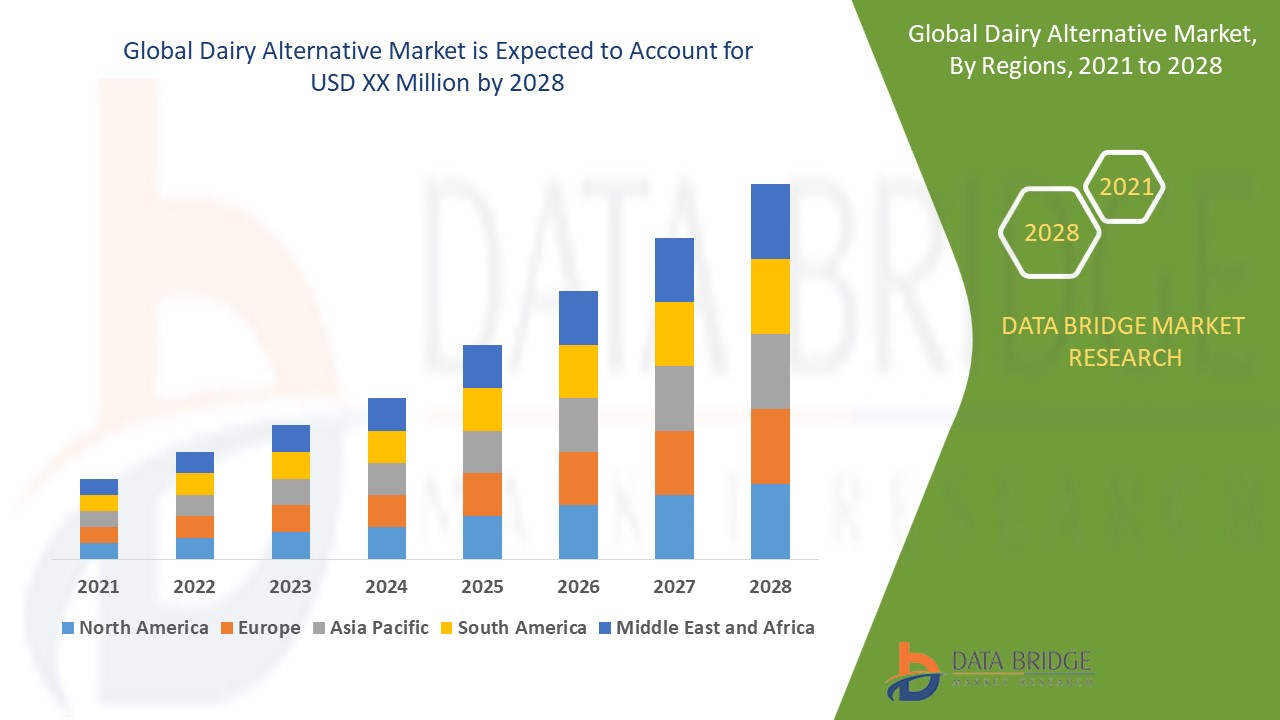 Market Analysis and Insights : Global Dairy Alternative Market
Market Analysis and Insights : Global Dairy Alternative Market



